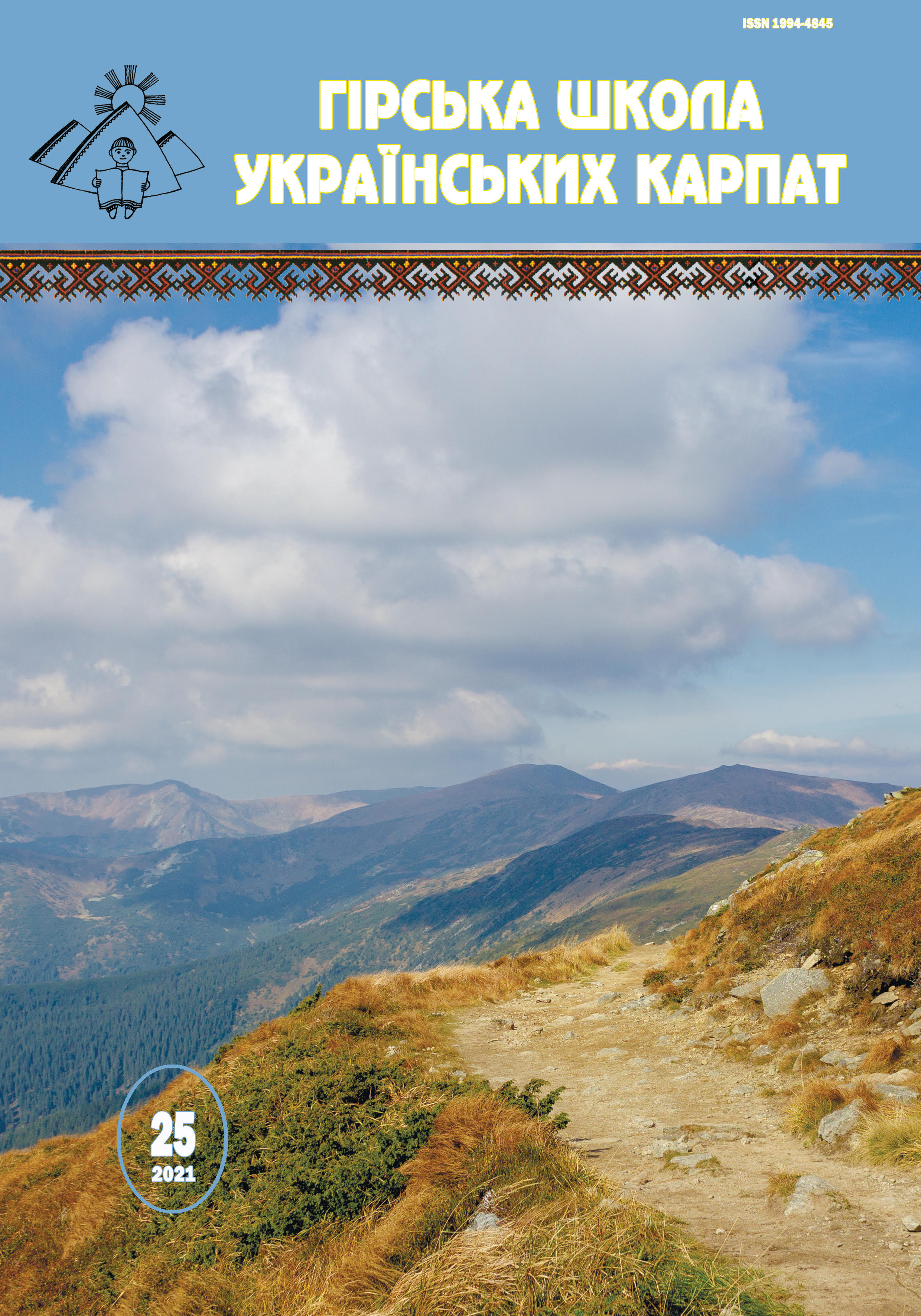ДІЯЛЬНІСТЬ ШКІЛЬНИХ ІНТЕРНАТІВ ЗАКАРПАТТЯ ПЕРШОЇ ПОЛОВИНИ ХХ СТОЛІТТЯ
Анотація
Створення та функціонування опорних закладів освіти зумовлює проблему забезпечення школярів умовами для проживання в разі відсутності можливостей для їх щоденного підвезення до опорного закладу освіти. Саме це й актуалізує проблему створення шкільних гуртожитків або шкільних інтернатів. Шкільні інтернати діяли на території Закарпаття ще в першій половині ХХ століття. Мета дослідження – провести ретроспективний аналіз діяльності шкільних інтернатів у Закарпатті першої половини ХХ століття. Методи дослідження: пошуково-бібліографічний – з метою вивчення архівних, бібліотечних каталогів, фондів, описів та бібліографічних видань; контент-аналіз архівних джерел та матеріалів щодо діяльності шкільних інтернатів. У статті здійснено огляд діяльності шкільних інтернатів у Закарпатті першої половини ХХ століття, поява яких зумовлювалася прийняттям в 1868 р. Закону «Про освіту», відповідно до якого на території закарпатських земель, що входили до складу Австро-Угорської імперії, розпочалась стрімка розбудова освітніх закладів – від народних початкових шкіл до горожанських, а також гімназій, ліцеїв, вчительських семінарій. Переважно ці заклади знаходилися в низовинній частині сучасного Закарпаття в містах Ужгород, Мукачево, Берегово, Надь Севлюш, відтак учні віддалених та гірських районів потребували умов для проживання за місцем навчання. Шкільні інтернати організовувалися державним коштом та за підтримки приватних осіб, благодійних організацій. Шкільні інтернати передбачали цілодобове перебування вихованців та організовували їх життєдіяльність у вільний від навчання час. Для забезпечення діяльності шкільного інтернату призначався управитель, префекти (педагогічні наставники, вихователі), духовний управитель, а також допоміжний персонал.


